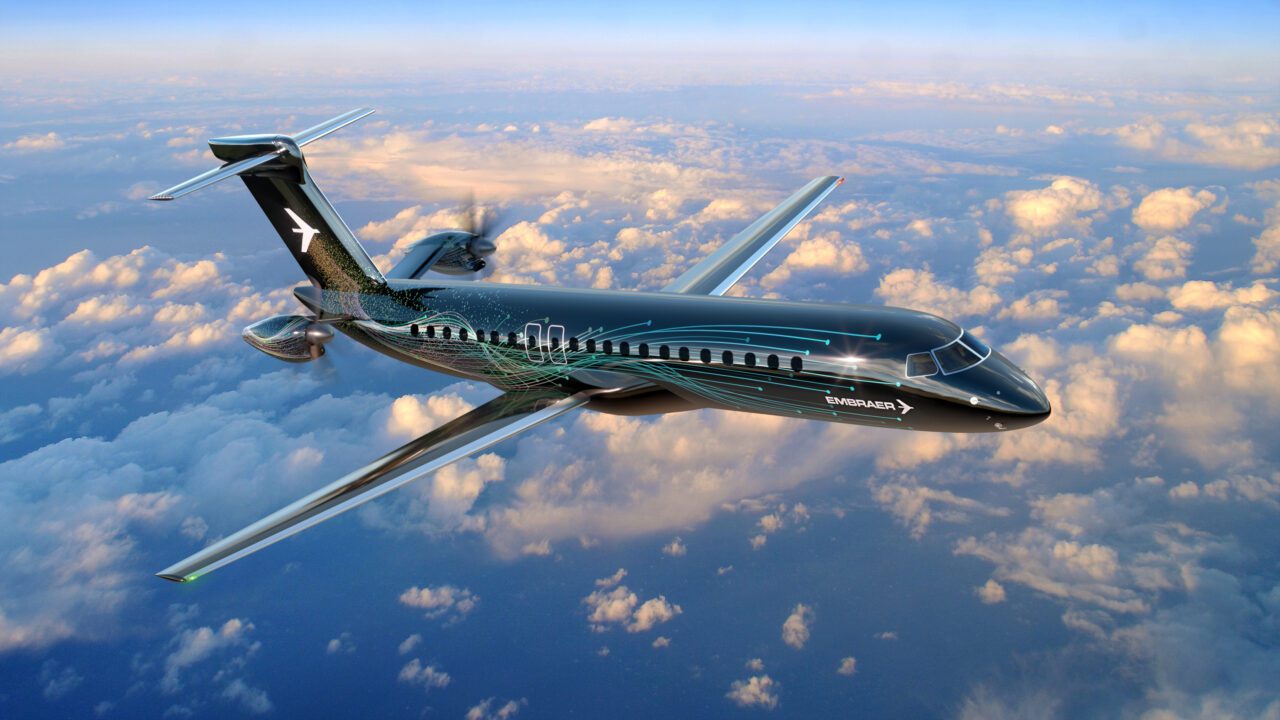
Embraer President Arjan Meijer tweeted a photo of the company’s conceptual design for a next-generation turboprop targeting the regional airline market on the same day Embraer published its second-quarter earnings results, noting that the “rear-mounted engines reduce cabin noise for a jet-like experience.” (Embraer)
Embraer is studying the development of a next-generation turboprop aircraft with rear-mounted engines and a “jet-like” passenger experience, according to comments made by their top engineering executive during a live webcast hosted by the Brazilian airframe manufacturer results on Aug. 13.
The next-generation turboprop design was one of several concepts and new sustainability goals outlined by Embraer during the webcast, which includes a goal of making their aircraft 100 percent compatible with sustainable aviation fuel by 2030. Other goals include a 50 percent reduction in overall carbon emissions generated by their aircraft by 2040 and net zero emissions by 2050.
Luis Carlos Affonso, senior vice president of engineering, technology, and corporate strategy for Embraer, cautioned that the conceptual clean sheet regional turboprop aircraft has not been officially launched as a program yet. The company is still studying the concept and engaging potential partners and customers.
“Our proposal is to offer a high technology 70 to 90 seat turboprop with the same cross-section of the E-jets. Very comfortable, no middle seats and spacious overhead bins,” Affonso said. “The rear fuselage-mounted engines will provide a quiet cabin and allow jet bridge compatibility. With game-changing characteristics, this turboprop will replace the current 50-seat regional jets in very important markets.”
Affonso also discussed his belief that turboprops have effectively “disappeared” over the last two decades from new aircraft designs and development programs targeting regional airlines because passengers view them as too small, noisy, and uncomfortable.
“Our proposal will be a jet-like turboprop, with the only difference that it will use from 20 to 40 percent less fuel and emit up to 40 percent less carbon, so it will be an important airplane if we come to launch it,” Affonso said.
The rear engine-mounted turboprop was one of several next-generation designs discussed by Affonso, including an electric military transport aircraft concept called STOUT and an electric vertical takeoff and landing (eVTOL) aircraft that Embraer is targeting for its first flight of around 2025.

Embraer’s single-engine electric demonstrator aircraft performed its first flight a few days prior to their second-quarter earnings call and webcast. (Embraer)
Embraer is also researching the technical, economical, and supply chain aspects of designing a hydrogen-powered aircraft, with Affonso noting that their roadmap “considers a hydrogen-powered test vehicle first flight by 2025.”
Affonso also provided updates on the completion of the first flight of Embraer’s electric demonstrator aircraft several days prior to the webcast. Based on the Embraer single-engine EMB-203 Ipanema crop duster, the demonstrator aircraft uses an electric motor and controller supplied by WEG, a Brazilian supplier of electric motors, generators, and transformers.
“This testbed will help develop knowledge about batteries, electric motors, thermal management, electric control systems, high voltage handling, safety of flight that will then be applied to our future aircraft,” Affonso said.
Embraer reported a second-quarter net income of $40.5 million, its first profitable quarter since the first quarter of 2018. The company also provided its first delivery guidance since the start of the pandemic and expects to deliver 40 to 45 commercial aircraft and 90 to 95 executive jets for the year.